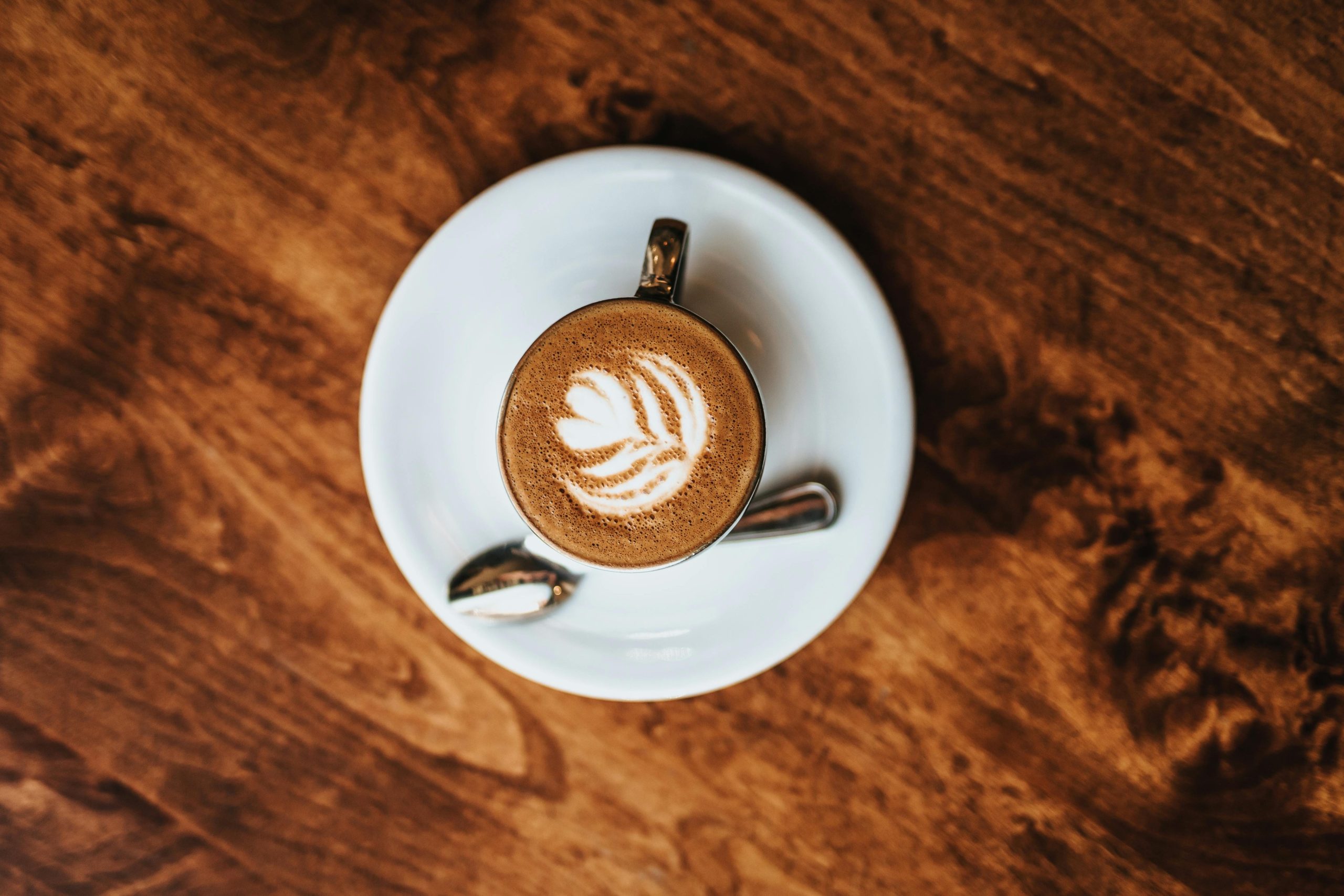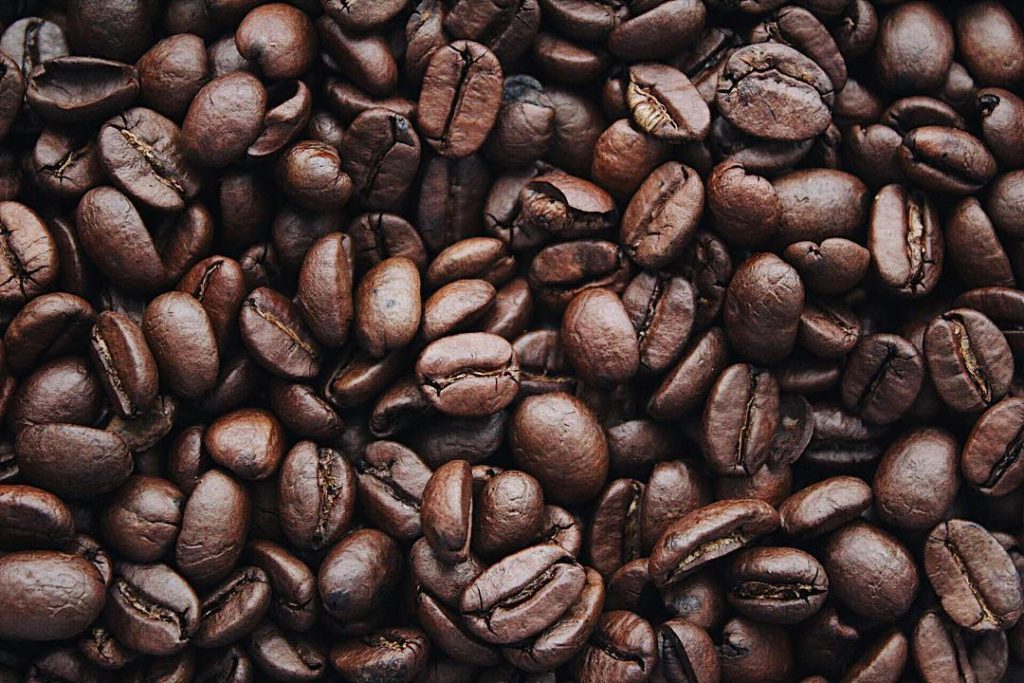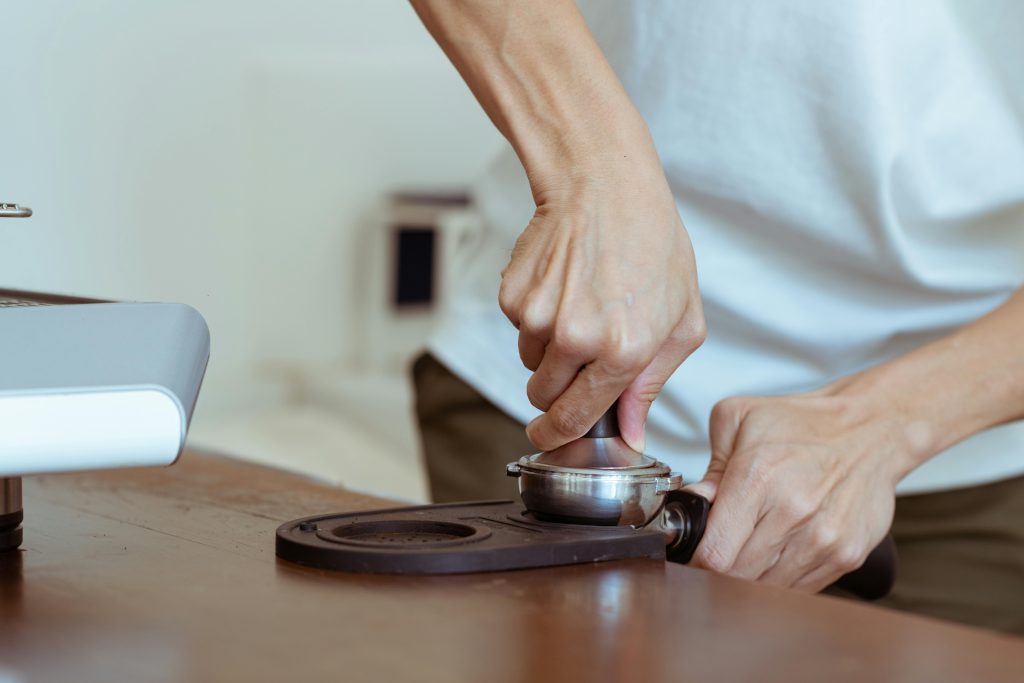The Basics of Making Espresso at Home
To make espresso at home, you’ll need an espresso machine capable of producing the high pressure needed to extract the concentrated flavors from finely ground coffee beans. The process starts with selecting quality coffee beans that are specifically roasted for espresso, ensuring a flavorful and aromatic cup of espresso. Once you have your beans, it’s crucial to grind them to the appropriate fineness for espresso, as the grind size plays a significant role in the extraction process. Finely ground coffee allows for optimal extraction, resulting in a rich and full-bodied shot of espresso.
After grinding your coffee to the right consistency, the next step is to pack or “tamp” the coffee grounds into the portafilter with firm and even pressure. Tamping ensures that the water flows evenly through the coffee grounds during extraction, maximizing flavor and consistency in your espresso shot. Once the coffee is properly tamped, it’s time to brew the espresso using your machine’s brewing function, following the manufacturer’s instructions for the best results. Mastering these foundational steps is essential for creating a delicious espresso shot at home, setting the stage for exploring more advanced techniques and recipes in the world of espresso brewing.

Selecting the Right Coffee Beans for Espresso
When it comes to selecting the right coffee beans for espresso, it’s crucial to consider the roast level. Medium to dark roasts are generally preferred for espresso due to their rich and intense flavors that complement the brewing process. These roasts bring out the desirable caramelized sugars and oils that contribute to a velvety texture and robust taste in your espresso shot.
Additionally, the origin of the coffee beans plays a significant role in determining the flavor profile of your espresso. Different regions around the world produce coffee beans with distinct characteristics, ranging from fruity and floral notes to chocolatey and nutty undertones. Experimenting with single-origin beans or blends from various regions can help you discover your preferred flavor profile and enhance your espresso brewing experience.

Understanding the Importance of Grind Size
Grind size plays a crucial role in determining the quality and taste of your espresso. The size of the coffee grounds directly affects the rate at which flavors are extracted during the brewing process. A fine grind is ideal for espresso as it increases the surface area of the coffee particles, allowing for a more efficient extraction of flavors and oils. On the other hand, a coarse grind can result in under-extraction, leading to a weak and sour espresso shot.
In addition to impacting flavor, grind size also affects the brewing time of your espresso. A finer grind will slow down the extraction process, giving the water more time to interact with the coffee grounds and extract the desired flavors. Conversely, a coarser grind will result in a faster extraction, which may lead to a bitter and over-extracted espresso. Experimenting with different grind sizes can help you find the perfect balance to achieve a smooth and balanced shot of espresso.
Mastering the Art of Tamping
Tamping is a crucial step in the espresso brewing process. It involves packing the coffee grounds into the portafilter to create a uniform surface for water to pass through. Consistency is key when tamping to ensure even extraction of flavors from the coffee grounds. Proper tamping pressure and technique can greatly impact the quality of the espresso shot produced.
When tamping, it is important to apply even pressure to the coffee grounds using a tamper that fits the size of your portafilter. The goal is to create a level and smooth surface to ensure that water flows through the grounds evenly. Tamping too lightly can result in under-extraction, leading to a weak and sour espresso, while tamping too hard can cause over-extraction, resulting in a bitter and over-extracted shot. Practice and experimentation will help you find the perfect tamping technique to produce a delicious and balanced espresso shot.


The Role of Water Temperature in Brewing Espresso
Water temperature plays a crucial role in the process of brewing espresso. The ideal temperature range for brewing espresso is typically between 195°F to 205°F. Water that is too hot can lead to over-extraction, resulting in a bitter and burnt taste in the espresso. Conversely, water that is too cool can lead to under-extraction, producing a weak and sour shot of espresso. Maintaining the correct water temperature is essential to extracting the flavors and aromas from the coffee beans to achieve a balanced and flavorful espresso.
In addition to the initial water temperature, the consistency of the temperature throughout the brewing process is also vital. Fluctuations in water temperature can impact the extraction of the coffee, leading to inconsistent shots of espresso. Investing in a high-quality espresso machine with temperature stability features can help ensure that the water temperature remains constant, allowing for a more precise and controlled brewing process. By paying attention to the water temperature and its consistency, espresso enthusiasts can enhance the flavors and quality of their home-brewed espresso.
The Importance of Brewing Pressure
Brewing pressure plays a crucial role in the process of making espresso. The pressure at which water is forced through the compacted coffee grounds is what gives espresso its rich flavor and aromatic crema. Ideally, the brewing pressure for espresso should be around 9 bars, which is equivalent to 130 pounds per square inch. This level of pressure ensures proper extraction of the coffee solids, oils, and flavors, resulting in a well-balanced and flavorful shot of espresso.
If the brewing pressure is too low, the espresso may taste weak and under-extracted. On the other hand, excessive pressure can lead to over-extraction, resulting in a bitter and unpleasant flavor. It’s essential to calibrate your espresso machine to achieve the optimal brewing pressure for consistently delicious espresso. Remember, brewing pressure is one of the key factors that contribute to the quality of your espresso, so it’s worth paying attention to and adjusting as needed.
Adjusting the Extraction Time for the Perfect Shot
To achieve the perfect shot of espresso, mastering the extraction time is crucial. The extraction time refers to the period during which water is in contact with the coffee grounds in the portafilter. A standard extraction time for a single shot of espresso is around 25 to 30 seconds. This timing allows for the optimal extraction of flavors and aromas from the coffee beans without over-extracting, which can result in a bitter or sour taste. It is essential to adjust the grind size, tamping pressure, and brewing temperature to ensure the extraction time falls within this desired range.
Experimenting with different extraction times can help fine-tune the flavor profile of your espresso. If the extraction time is too short, the espresso may taste weak or under-extracted, lacking body and depth. On the other hand, if the extraction time is too long, the espresso can become over-extracted, resulting in a harsh and bitter taste. By carefully monitoring and adjusting the extraction time based on the taste of the espresso, you can dial in the perfect shot that suits your preferences.
The Significance of Crema in Espresso
Crema, the golden layer that sits atop a freshly brewed espresso, is not just a visually appealing component of the drink. It plays a crucial role in enhancing the overall flavor and aroma of the espresso. The crema is formed during the brewing process when the hot water combines with the oils in the coffee grounds, creating a creamy emulsion that traps carbon dioxide gas.
Aside from adding a velvety texture to the espresso, the crema also acts as a seal, preserving the flavors and aromas of the coffee underneath. A thick and consistent crema indicates that the espresso was brewed properly, showcasing the quality of the beans and the skill of the barista. When sipping on a well-made espresso with a rich crema, you can expect a harmonious balance of flavors and a delightful sensory experience that lingers long after the last drop has been enjoyed.
Troubleshooting Common Espresso Brewing Issues
If you find that your espresso is tasting overly bitter, it could be due to an excessively fine grind size. Adjust the grinder to a coarser setting to prevent over-extraction. On the other hand, if your espresso lacks flavor and strength, the grind size might be too coarse. Try a finer grind to extract more flavor compounds from the coffee. Additionally, inconsistent tamping pressure can lead to uneven extraction, resulting in a subpar shot. Ensure that you apply even pressure while tamping to achieve a balanced extraction every time.
Another common issue that espresso enthusiasts face is a leaky portafilter. This could be caused by a faulty gasket or worn-out seal. Replace the gasket or seal to prevent leaks and properly pressurize the brewing process. If your machine is producing weak or watery shots, check the water temperature. Inadequate brewing temperature can lead to under-extracted espresso. Adjust your machine’s settings to ensure that the water is within the optimal temperature range for brewing.
• Adjust the grinder to a coarser setting if espresso tastes overly bitter
• Try a finer grind if espresso lacks flavor and strength
• Ensure even tamping pressure for balanced extraction
• Replace faulty gasket or worn-out seal in case of leaky portafilter
• Check water temperature to prevent weak or watery shots
Experimenting with Different Espresso Recipes
Experimenting with different espresso recipes can truly elevate your coffee experience at home. By trying out various combinations of ingredients and techniques, you can discover unique flavors and textures that suit your taste preferences. One popular recipe to experiment with is the espresso martini, which combines the bold flavors of espresso with the richness of vodka and sweetness of coffee liqueur for a decadent cocktail experience.
For those with a sweet tooth, incorporating flavored syrups or spices into your espresso can create delightful concoctions such as caramel macchiatos or spicy mochas. Additionally, exploring different milk options like oat, almond, or coconut can add a creamy twist to your espresso beverages. Get creative in your kitchen and don’t be afraid to try new flavor combinations to find the perfect espresso recipe that brings you joy with every sip.
Choosing the Right Espresso Machine for Your Home
When it comes to selecting an espresso machine for your home, there are several factors to consider to ensure that you choose one that fits your needs and preferences. First and foremost, you should think about the type of espresso drinks you enjoy making the most. If you prefer traditional espresso shots, a manual espresso machine might be the right choice for you. However, if you enjoy specialty drinks like lattes and cappuccinos, a machine with a built-in milk frother or steamer would be more suitable.
Another important aspect to consider when choosing an espresso machine for your home is the level of convenience and control you desire. Automatic espresso machines offer a more hands-off approach, where the machine takes care of most of the brewing process for you. On the other hand, semi-automatic or manual machines provide you with more control over variables such as brewing pressure and extraction time, allowing you to fine-tune your espresso shots to perfection.
Exploring Manual Espresso Brewing Methods
Manual espresso brewing methods offer a hands-on approach to crafting your perfect shot of espresso. One popular method is using a traditional stovetop espresso maker, also known as a Moka pot. This simple device allows you to brew a strong and flavorful espresso-like coffee by passing boiling water through ground coffee under pressure. The Moka pot is easy to use and is a great option for those looking to experiment with manual brewing at home.
Another manual brewing method gaining popularity is the lever espresso machine. Lever machines require the user to manually pull down a lever to create the pressure needed to extract espresso. This method allows for more control over the brewing process, resulting in a customizable and unique espresso shot. Lever machines are favored by espresso enthusiasts for their ability to fine-tune variables such as pressure and extraction time to achieve the perfect balance of flavors in each cup.
The Benefits of Using a Milk Frother for Lattes and Cappuccinos
If you enjoy lattes and cappuccinos, investing in a milk frother can significantly enhance your at-home coffee experience. A milk frother is a handy tool that creates creamy and velvety textured milk, essential for achieving the perfect froth to top off your favorite espresso-based drinks. By frothing milk, you can achieve that luxurious microfoam that adds depth and richness to your beverages, elevating them to cafe-quality standards.
Not only does a milk frother improve the taste and texture of your lattes and cappuccinos, but it also allows you to experiment with different milk types and flavors. Whether you prefer dairy, soy, almond, or oat milk, a milk frother can froth them all, giving you the freedom to customize your drinks to suit your preferences. With a milk frother in your arsenal, you can easily create a variety of delicious and visually appealing coffee creations right in the comfort of your own home.
Creating Latte Art at Home
For many espresso enthusiasts, creating latte art at home is a rewarding and enjoyable part of the coffee making process. While it may seem like a daunting task, with practice and patience, anyone can learn to master the art of pouring beautiful designs on top of their lattes. The key to achieving stunning latte art lies in the quality of the milk froth and the technique used to pour it onto the espresso base.
One of the most popular designs in latte art is the heart, which is created by pouring the steamed milk in a circular motion and then pulling back through the center for a delicate finish. Other common designs include the rosetta, where the milk is poured in a back and forth motion to create leaf-like patterns, and the tulip, which involves layering the milk to form a series of stacked circles. Experimenting with different pouring techniques and milk froth consistency can lead to the creation of unique and beautiful designs that will impress both yourself and your guests.
Understanding the Difference Between Espresso and Coffee
Espresso and coffee are both beloved beverages enjoyed by people around the world, but they differ significantly in terms of preparation, flavor profile, and caffeine content. One of the key distinctions between espresso and coffee lies in the brewing process. Espresso is brewed by forcing hot water through finely-ground coffee under high pressure, resulting in a strong, concentrated shot of coffee. In contrast, traditional coffee is made by steeping coarsely-ground coffee beans in hot water to extract their flavors more gradually.
In addition to their brewing methods, espresso and coffee also vary in taste and intensity. Espresso is known for its bold and rich flavor, often exhibiting a thick crema on top, which is a sign of a well-prepared shot. Coffee, on the other hand, offers a more balanced and mellow taste, allowing for a wider range of flavors to come through depending on the bean variety and brewing technique employed. Despite these differences, both espresso and coffee provide a delightful way to savor the complexities of coffee beans and indulge in a comforting caffeine boost.
Tips for Cleaning and Maintaining Your Espresso Machine
To keep your espresso machine running smoothly and ensure the quality of your coffee, regular cleaning and maintenance are essential. One important step is to regularly descale your machine to remove mineral build-up that can affect the flavor of your espresso. Follow the manufacturer’s instructions for descaling solutions and frequency, as different machines may have specific requirements.
In addition to descaling, it’s crucial to clean the various components of your espresso machine after each use. This includes wiping down the steam wand, portafilter, and group head to prevent the build-up of coffee residue that can impact the taste of your espresso. Using a brush and cleaning solution designed for espresso machines can help effectively remove any oils or grounds that may accumulate. Regularly cleaning and maintaining your espresso machine not only prolongs its lifespan but also ensures that you consistently enjoy delicious cups of espresso at home.
The Environmental Impact of Brewing Espresso at Home
When it comes to brewing espresso at home, it’s essential to consider the environmental impact of your coffee-making routine. One significant aspect to evaluate is the type of coffee beans you purchase. Opting for beans that are ethically sourced and sustainably grown can help support environmentally friendly practices in the coffee industry. Additionally, choosing organic and Fair Trade beans can contribute to protecting ecosystems and ensuring fair wages for coffee farmers.
Another aspect to take into account is the energy consumption of your espresso machine. Some machines may consume more energy than others, so selecting an energy-efficient model can help reduce your carbon footprint. Furthermore, being mindful of water usage during the brewing process and properly maintaining your equipment can also minimize the environmental impact of your at-home espresso brewing. By making conscious choices in your coffee brewing habits, you can enjoy your espresso guilt-free knowing that you are contributing to a more sustainable future.
Sharing Your Love for Espresso with Friends and Family
One of the joys of being an espresso aficionado is sharing your passion with loved ones. Whether it’s hosting a cozy coffee tasting session at home or simply brewing a freshly prepared shot for a friend, introducing others to the world of espresso can be a rewarding experience. Encourage your friends and family to explore different flavor profiles, brewing techniques, and espresso recipes to deepen their appreciation for this beloved beverage.
Creating a welcoming and inviting environment for your espresso gatherings is essential to fostering a sense of community around this shared interest. Consider setting up a dedicated espresso station with all the necessary tools and ingredients to make the experience interactive and educational. Share brewing tips, tricks, and personal anecdotes to spark conversations and inspire others to further delve into the art of espresso. By fostering a culture of appreciation and curiosity, you can enrich the coffee experiences of those closest to you and create lasting memories centered around the love for espresso.
Exploring Different Espresso Blends and Single Origins
When delving into the world of espresso, one key aspect to consider is the variety of blends and single origins available. Espresso blends typically consist of a mix of different coffee beans that are carefully curated to create a balanced and flavorful shot. These blends often combine beans with varying profiles to achieve a harmonious taste that is ideal for espresso extraction.
On the other hand, single origin espressos are crafted using beans sourced from a specific region or even a single farm. This approach allows for a more focused flavor profile that showcases the unique characteristics of the coffee beans and the terroir in which they were grown. Single origin espressos are prized for their distinct and often complex flavors that can range from fruity and floral to chocolaty and nutty notes. Exploring the differences between espresso blends and single origins can open up a whole new world of sensory experiences for espresso enthusiasts.
Taking Your Home Espresso Skills to the Next Level
To elevate your home espresso skills to the next level, consider investing in a quality burr grinder. Consistent grind size is crucial in achieving a balanced and flavorful shot of espresso. Experiment with different grind settings to find the ideal one for your preferred brewing method. Additionally, explore the world of single-origin beans to fully appreciate the unique flavors and aromas each origin has to offer. Grind fresh beans just before brewing to preserve their intricate flavors and aromatics, enhancing the overall taste of your espresso.
Another way to enhance your espresso-making prowess is by mastering the art of milk frothing. A creamy and velvety milk texture can elevate your espresso beverages, such as lattes and cappuccinos, to a professional level. Practice steaming milk to achieve the perfect microfoam consistency for latte art or to simply enhance the flavor profile of your drinks. With patience and practice, you can impress yourself and others with cafe-quality espresso beverages right in the comfort of your home.

